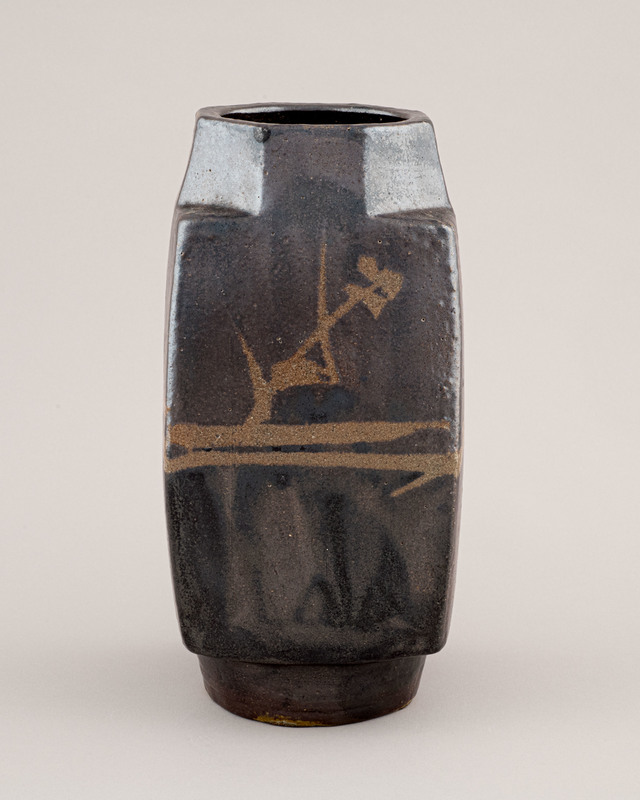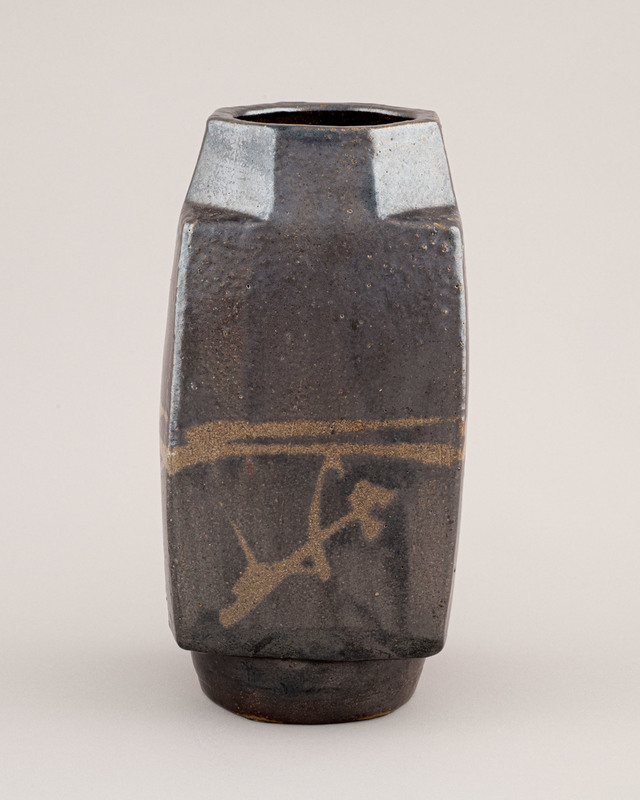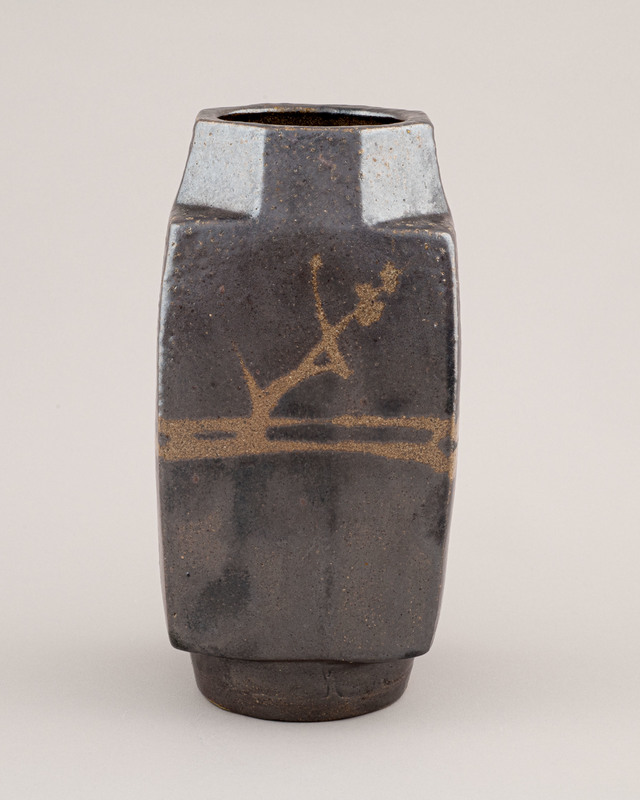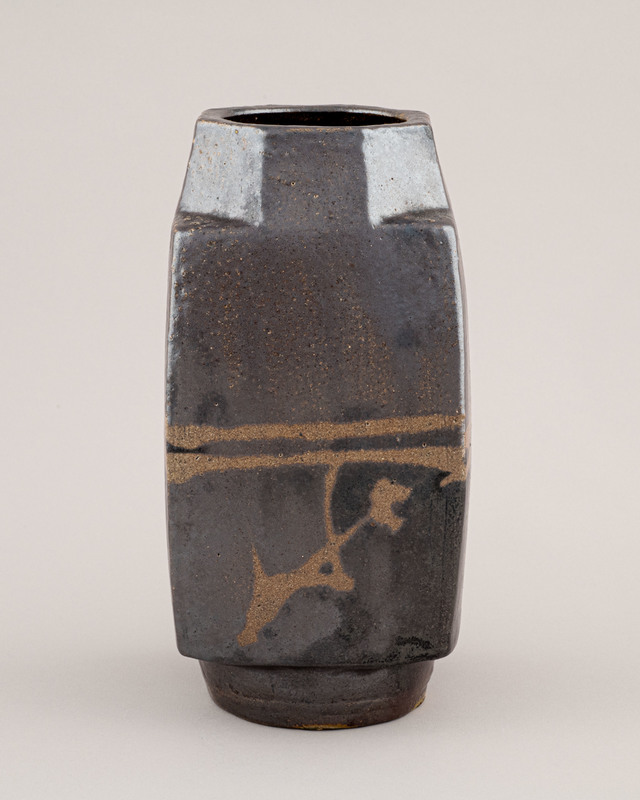Broken Sugar Cane Mizusashi
Item
Title
Broken Sugar Cane Mizusashi
Creator
Shoji HAMADA
Japanese, 1894–1978
Japanese, 1894–1978
Date
c. 1955
Materials
Mashinko stoneware
Measurements
10 x 4-3/4 x 4-3/4 in. (25.4 x 12.1 x 12.1 cm)
Description
This vase is made in a two-part open mold where each side is pressed individually; the two halves are then joined along the corners. The square-bodied form is based on Chinese Song dynasty flower vases adapted for used as a mizusashi, the water container in the Japanese tea ceremony. The black tenmoku glaze is made with iron dust from a local blacksmith. It is embellished with Hamada’s signature brushwork in wax resist. An organic pattern of a broken sugar cane above and below the horizontal lines gives the impression of a reflection on water. Hamada has said this design was inspired by a typhoon-damaged cane field he saw in Okinawa in the late 1920s.
Source
Palmer Museum of Art, The Pennsylvania State University.
Identifier
79.1
Rights
This image is posted publicly for non-profit educational uses, excluding printed publication. Other uses are not permitted.




